Complete Solutions to Problems Based On Mixed Concepts of chapter ELECTRIC POTENTIAL & CAPACITANCE of Class 12 book with complete answers and questions
| Class 12 | PHYSICS |
| Chapter | ELECTRIC POTENTIAL & CAPACITANCE |
| A2Z | Problems Based On Mixed Concepts |
| Number Of Questions | 44 |
| Academic Year | 2023-24 |
A charged particle of charge 'Q' is held fixed and another charged particle of mass 'm' and charge 'q' (of the same sign) is released from a distance 'r'. The impulse of the force exerted by the external agent on the fixed charge by the time distance between 'Q' and 'q' becomes `2 r` is
03:31View SolutionA very large sphere having charge `Q` uniformly distributed on the surface s compressed uniformly till its radius reduces to `R`. The work done by the electric force in this process is :
02:39View SolutionIn the figure shown the electric potential energy of the system is : `(q` is at the center of the conducting neutral spherical shell of inner radius a and outer radius `b`)
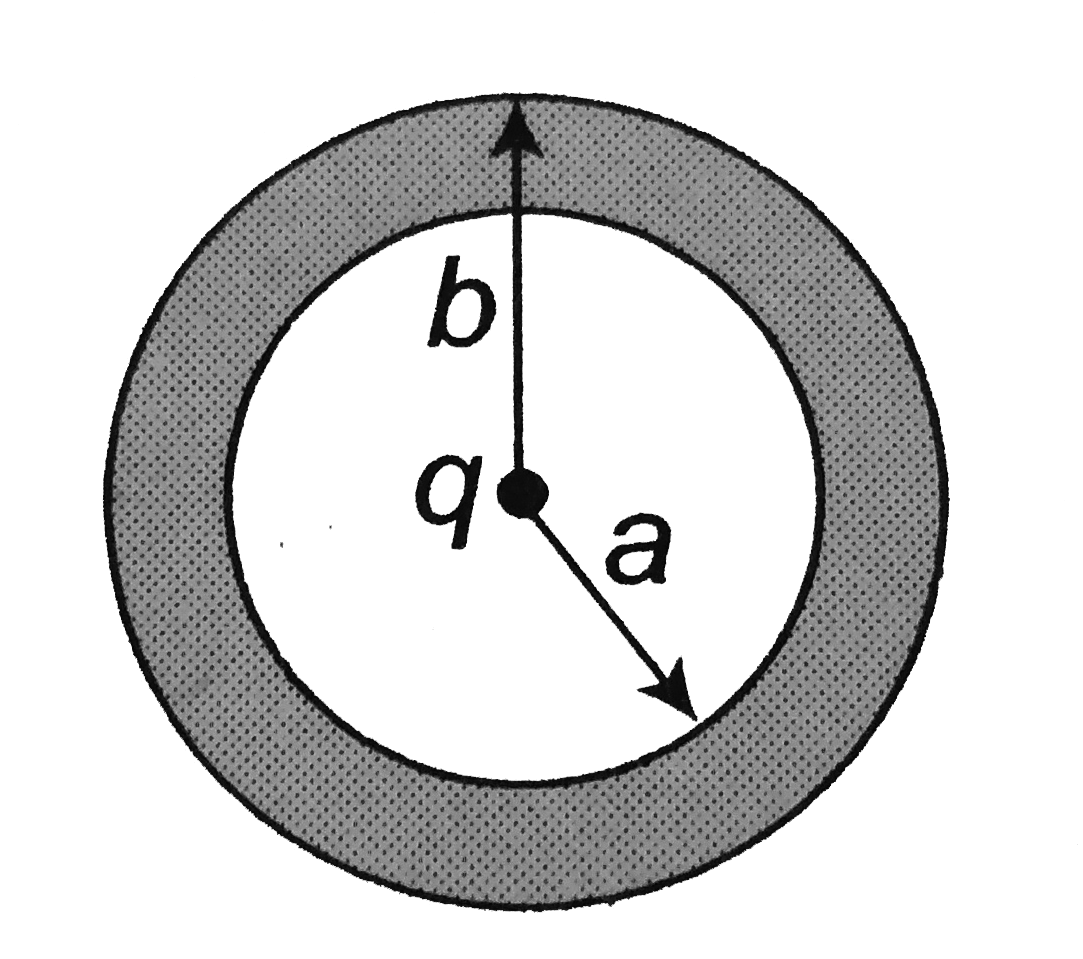 02:47View Solution
02:47View SolutionA point charge 'Q' is placed at the centre of a spherical cavity of radius 'b' carved inside a solid conducting sphere of radius 'a'. Then total energy of the system is:
`[k = (1)/(4pi in_(0))]`
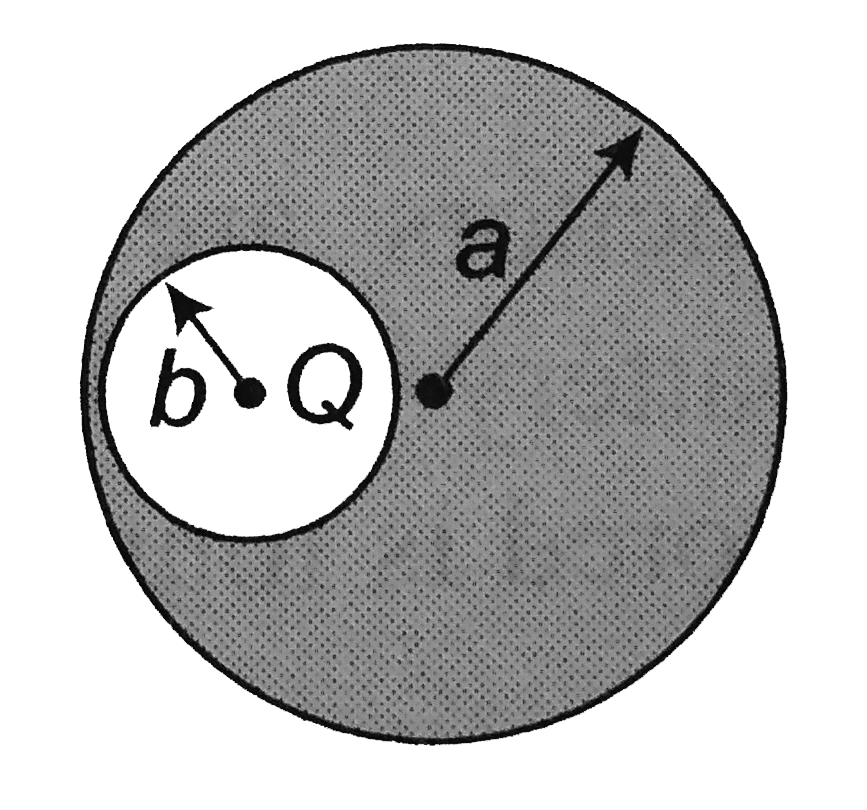 06:56View Solution
06:56View SolutionFour charges are rigidly fixed along the Y-axis as shown. A positive charge approches the system along the `X`axis with initial speed just enough to cross the origin. Then its total energy at the origin is
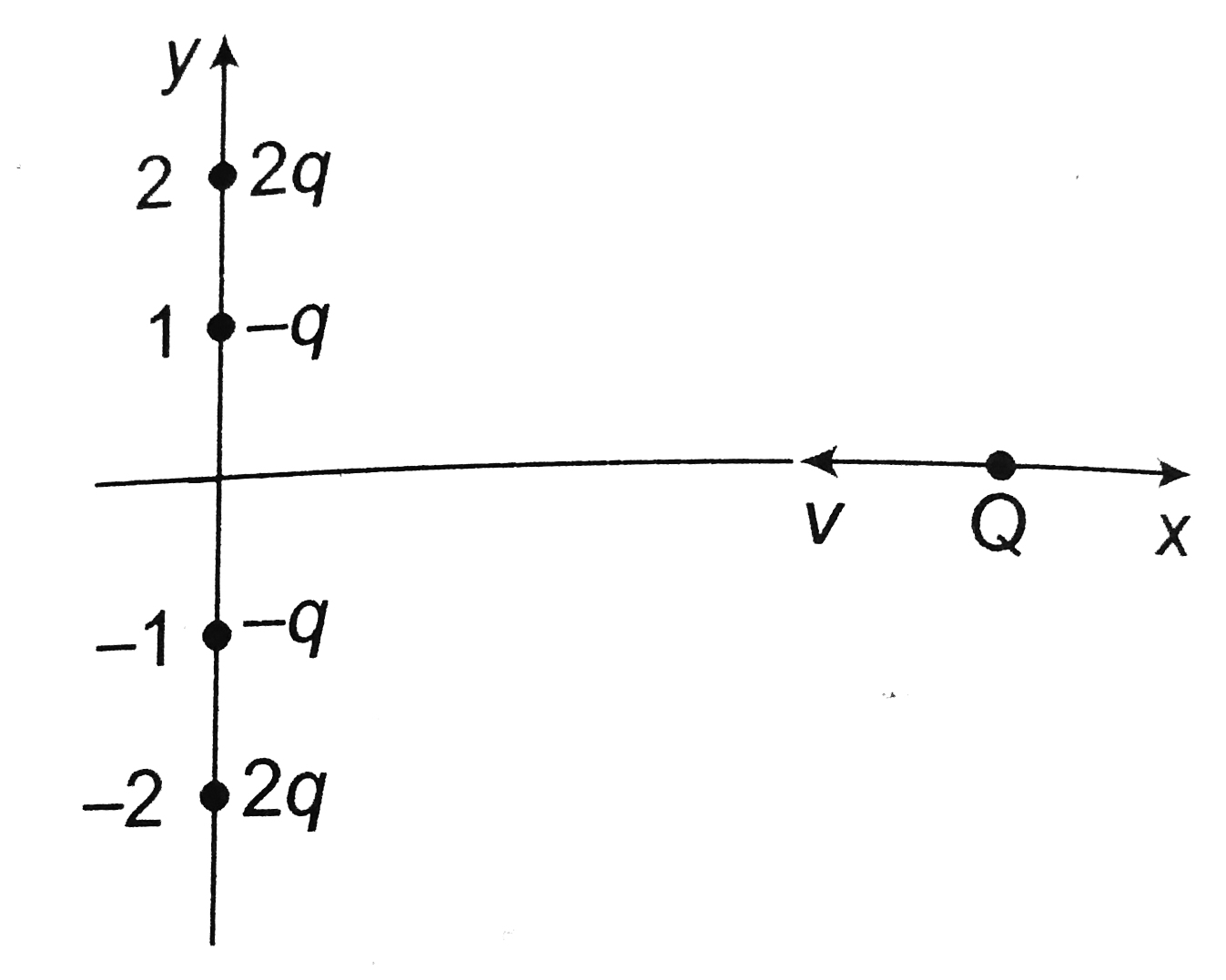 04:17View Solution
04:17View SolutionThree charge `+q, -q`, and `+2q` are placed at the vertices of a right angled triangle (isosceles triangle)as shown. The net electrostatic energy of the configuration is:
 01:52View Solution
01:52View SolutionThree equal charges `Q` are placed at the three vertices of an equilateral triangle. What should be the va,ue of a charge, that when placed at the centroid, reduces the interaction energy of the system to zero ?
03:42View SolutionYou are moving a negative charge `q lt 0` at a small constant speed away from a uniformly charged non-conducting spherical shell on which resides a negative charge `Q lt 0`. The electrostatic, field of `Q` is `E`. Let `U` be the total energy of the system, `W_(a)` the work done by the force `F_(a)` you exert on `q, W_(E)` the work done by the electrostaitc force `F_(E)` on `q`. Then, as `q` is being moved :
03:39View SolutionCharge on the outer sphere is `q`, and the inner sphere is grounded. Then the charge `q`' on the inner sphere is q', for
`(r_(2) gt r_(1))`
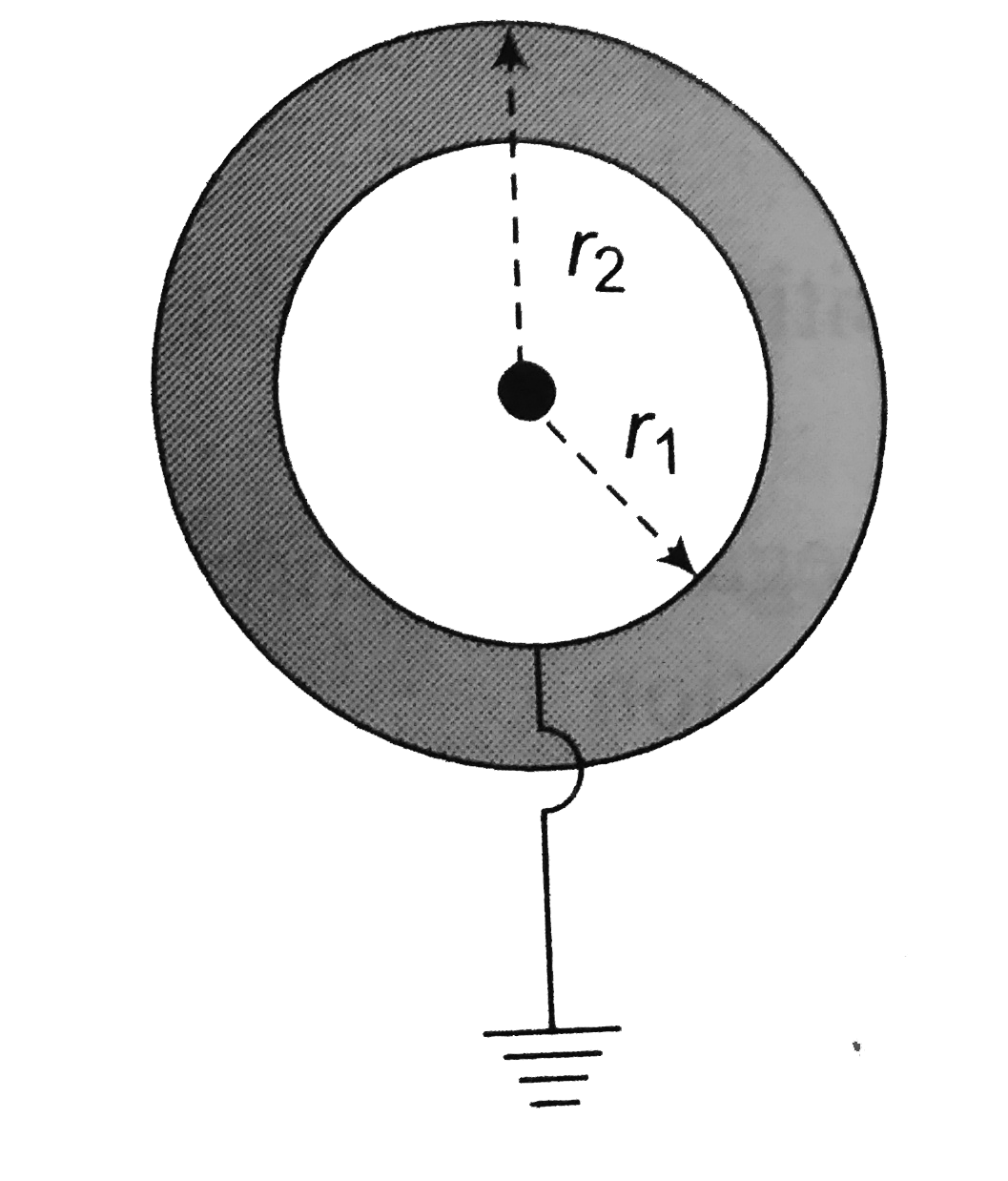 05:45View Solution
05:45View SolutionA ring of radius `0.5 m` carries a total charge of `1.0xx 10^(-10)C` distributed non uniformly on its circum Ference, producting an electric field `vecE`. The value of `int_(r = oo)^(r = 0) -vecE.vecd r (r = 0` being the centre of the ring)is
02:29View SolutionTwo connectric spheres of radii `R` and `r` have similar charges with equal surface charge densities `(sigam)`. The electric potential at their common centre is
02:52View SolutionA `5C` charge experience a force of `2000 N` when moved between two points separated by a distance of `2 cm` in a uniform electric field. The potential difference between the two points is
01:59View SolutionTwo points are at distance `a` and `b (a lt b)` from a long string of charge per unit length `lambda`. The potential difference between th epoints is proportional to
02:54View SolutionFour chrages `2C, -3C, -4C` and `5C` respectively are placed at all the corners of a square. Which of the following statements is true for the point of intersection of the diagonals ?
02:27View SolutionThe electric potetnial in a region along x-axis varies with `x` according to the releation `V(x) = 4 xx 5x^(2)`. Then the incorrect statement is
02:56View SolutionTwo charges, each equal to `1muC`, are placed at the vertices `A` and `B` of a triangle `ABC`. The produced of `AC` and `BC` is `30 cm^(2)`. The sum of the sides `AC` and `BC` is `10 cm`. The potential at `C` is
02:46View SolutionEight charged water drops, each with a radius of `1 mm` and a charge of `10^(10)C`, coalesce to from a single drop. The potential of the big drop is
02:51View SolutionConsider a unifrom electric field in a region as shown below. Then, potential difference between points `A` and `C` is given by
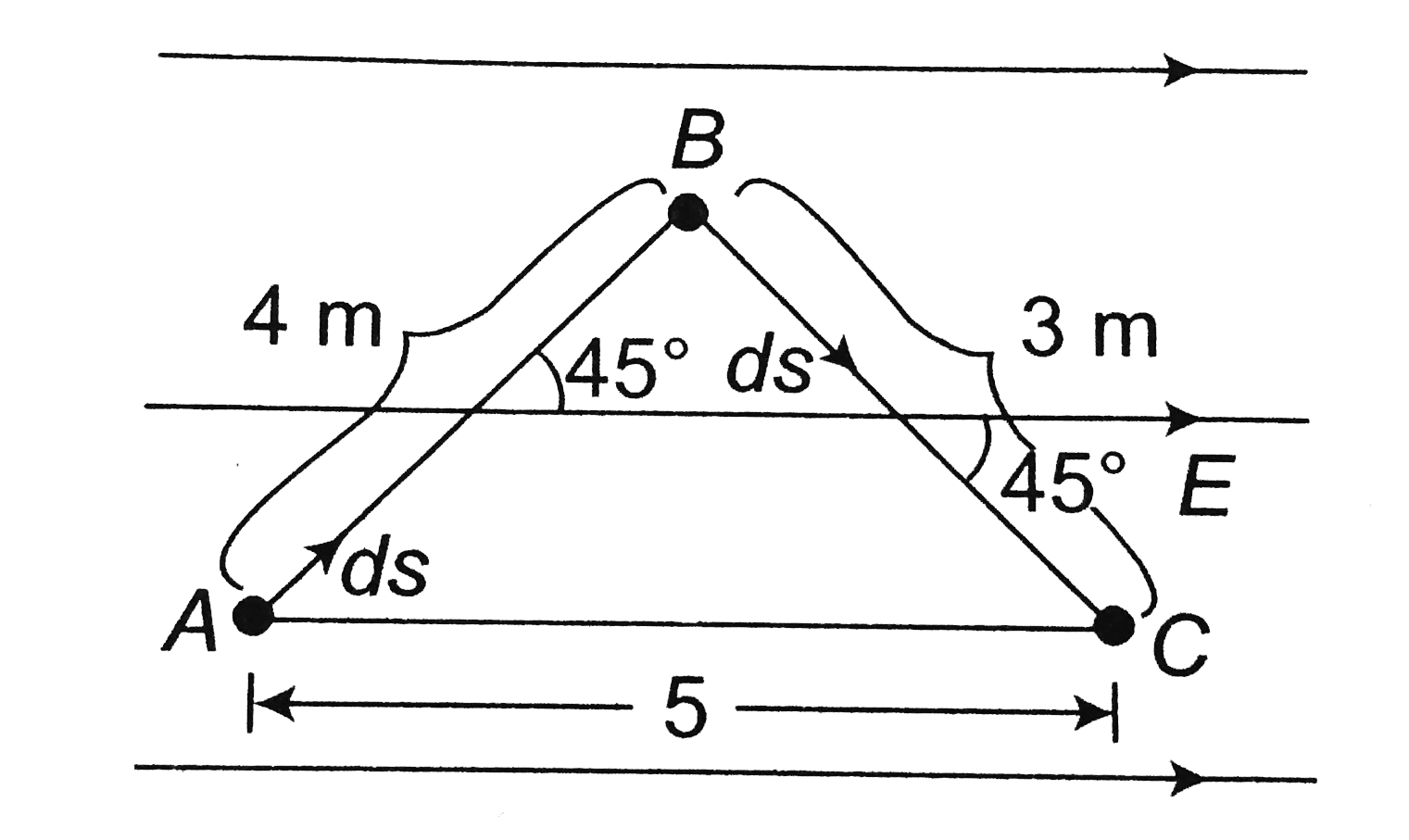 01:42View Solution
01:42View SolutionThe elctric potential in a region is given by, `v = 3x^(2) + 4x`. An electron is placed at the origin will experience:
02:19View SolutionTwo particles of charge `q_(1)` and `q_(2)` are separated by distance `d` as shown in figure. Chrage `q_(1)` is situarted at the origin. The net electirc field due to the particles is zero at `x = d//4`. With `V = 0` at infinity, the location of a point in terms of `d` on the `x` axis (other at infinfity) at which the elctrical potential due to the two particles is zero, is given by:
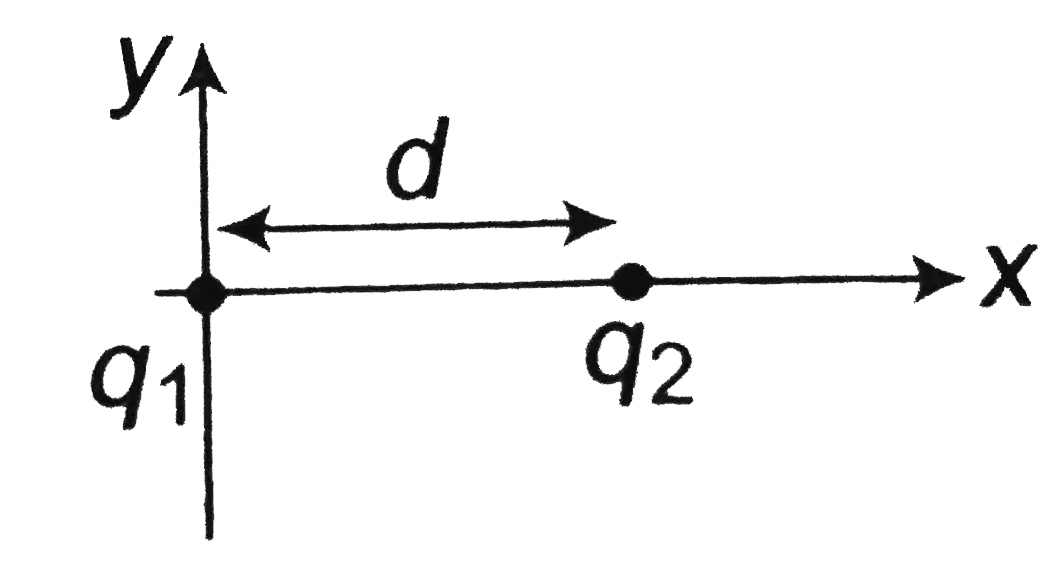 02:29View Solution
02:29View SolutionAn infinite number of concentric rings carry a charge `Q` each alternately positive and negative. Their radii are `1, 2, 4, 8..` meters in geometric progression as shown in the figure. The potential at the centre of the rings will be
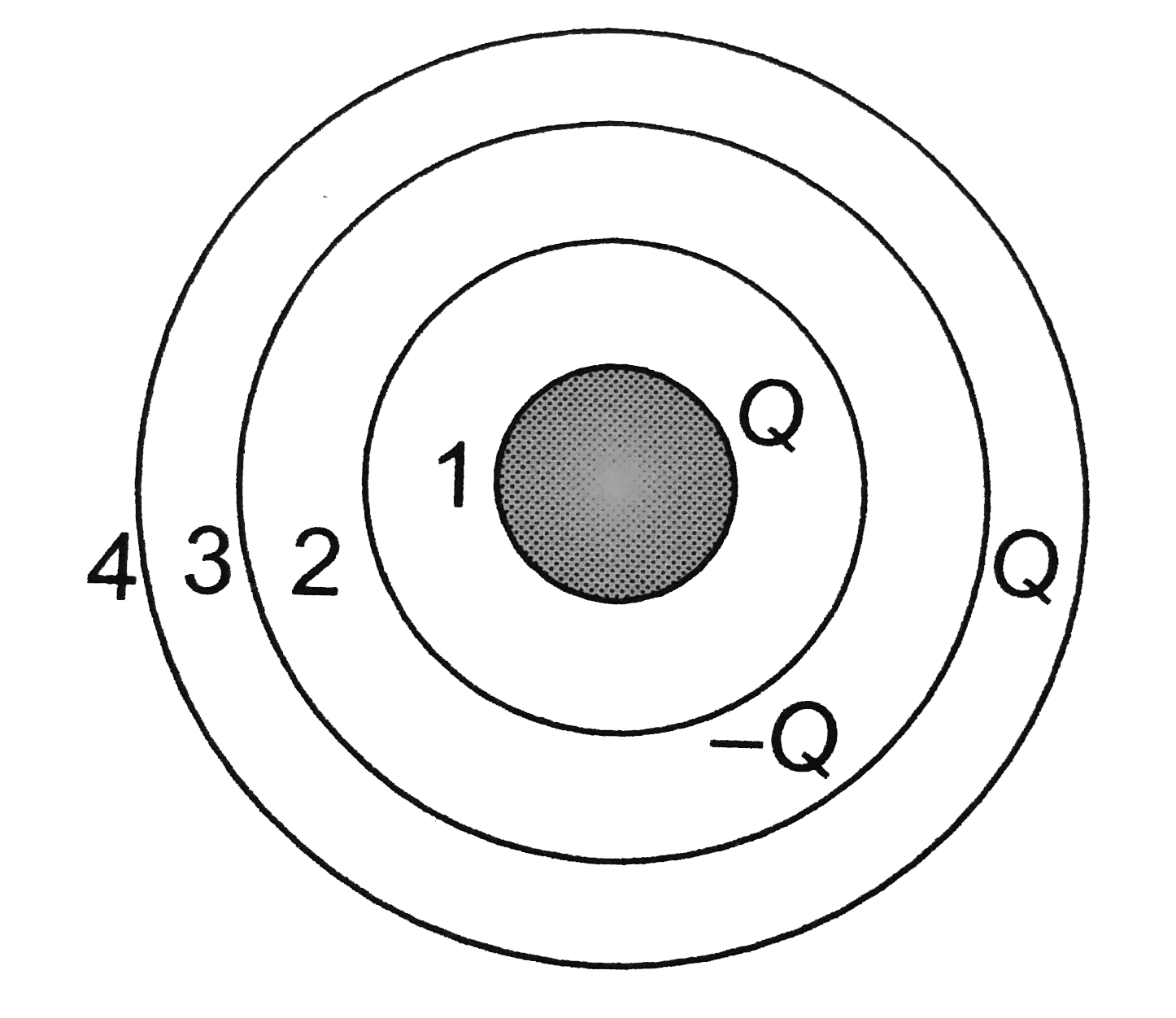 02:23View Solution
02:23View SolutionIn the region where electric field `E = 0`, the relation between electirc potential `V` and distance `r` is
01:17View SolutionThe curve represents the distribution of potential along the staight line joining the two charges `Q_1 and Q_2` (separated by a distance r) then which of the following statements are correct?
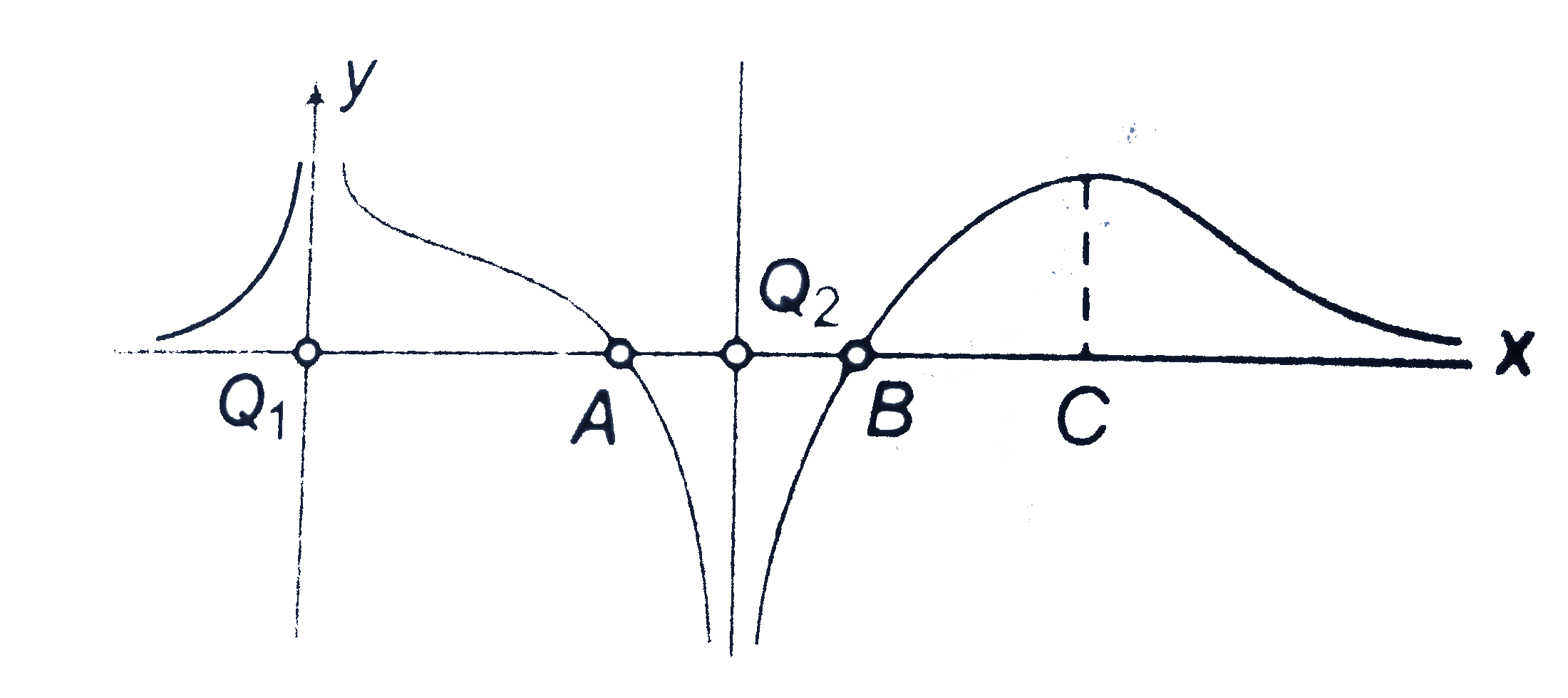
1. `|Q_1|gt|Q_2|`
2. `Q_1` is positive in nature
3. A and B are equilibrium points
4. C is a point of unstabkle equilibrium10:25View SolutionIn an electric field region, the electric potential varies along the x-axis as shown in the graph. The `x` components of the electirc field in the regions for the intervals `PQ` and `QR` as market in the garph, in `N//C`, are respectively:
 02:38View Solution
02:38View SolutionThe electric potential in a region is given by `V = (2x^(2) - 3y)` volt where `x` and `y` are in meters. The electric field intensity at a point `(0, 3m, 5m)` is
03:08View SolutionThe electirc field in a region is given by `vecE = (2x hati + 4y hatj) xx 10^(6) N//C` where `x` and `y` are in meters. `A 1 muC` charges particle is moved from origin to coordinates `(2m, 4m)` first along the y-axis and then along the x-axis. The work done by the elctric field is:
05:58View SolutionFind out work done by electirc field in shifting a point charge `(4sqrt(2))/(27)muC` from point `P` to `S` which are shown in the figure:
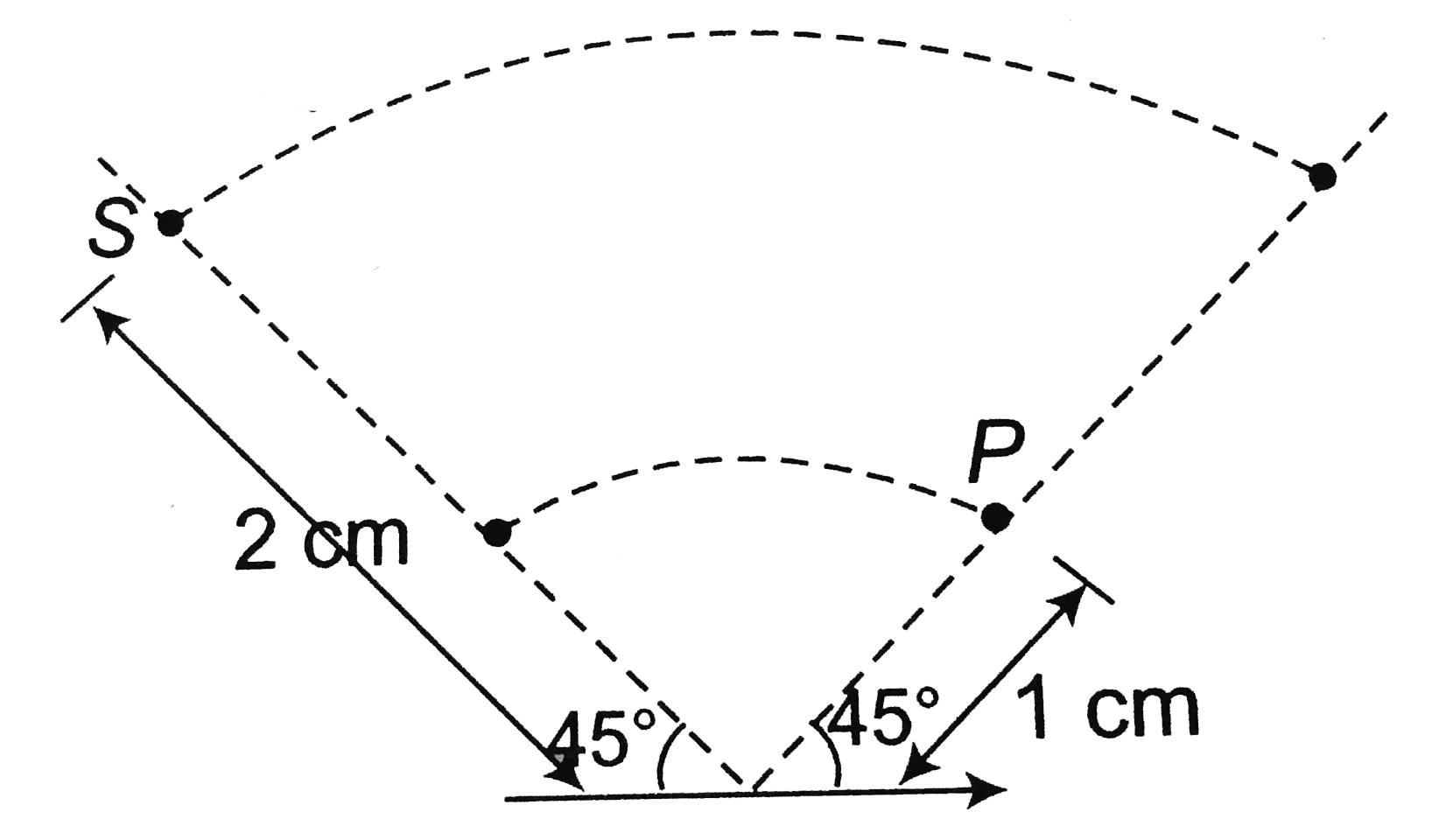 04:12View Solution
04:12View SolutionFor two points `A` and `B` in an electric field, if `DeltaW` is work done in taking a test charge `q`' from `A` to `B, DeltaU = V_(B) - V_(A)` is charge in potential energy of a rest charge when it is moved from `A` to `B`.

`DeltaV = V_(B) - V_(A)` is charge in potential due to field if we move along path `AB` from `A` to `B` and `ds` is differential displacement along path `AB`.
Then, which of the following options is correct ?02:23View SolutionThree point charges `1C, 2C` and `3C` are placed at the corners of an equilaternal triangle of side `1m`. The work required to move these charges to the corners of a smaller equilaternal triangle of side `0.5 m` in two differenct ways as in fig. `(A)` and fig. `(B)` are `W_(a)` and `W_(b)` then:
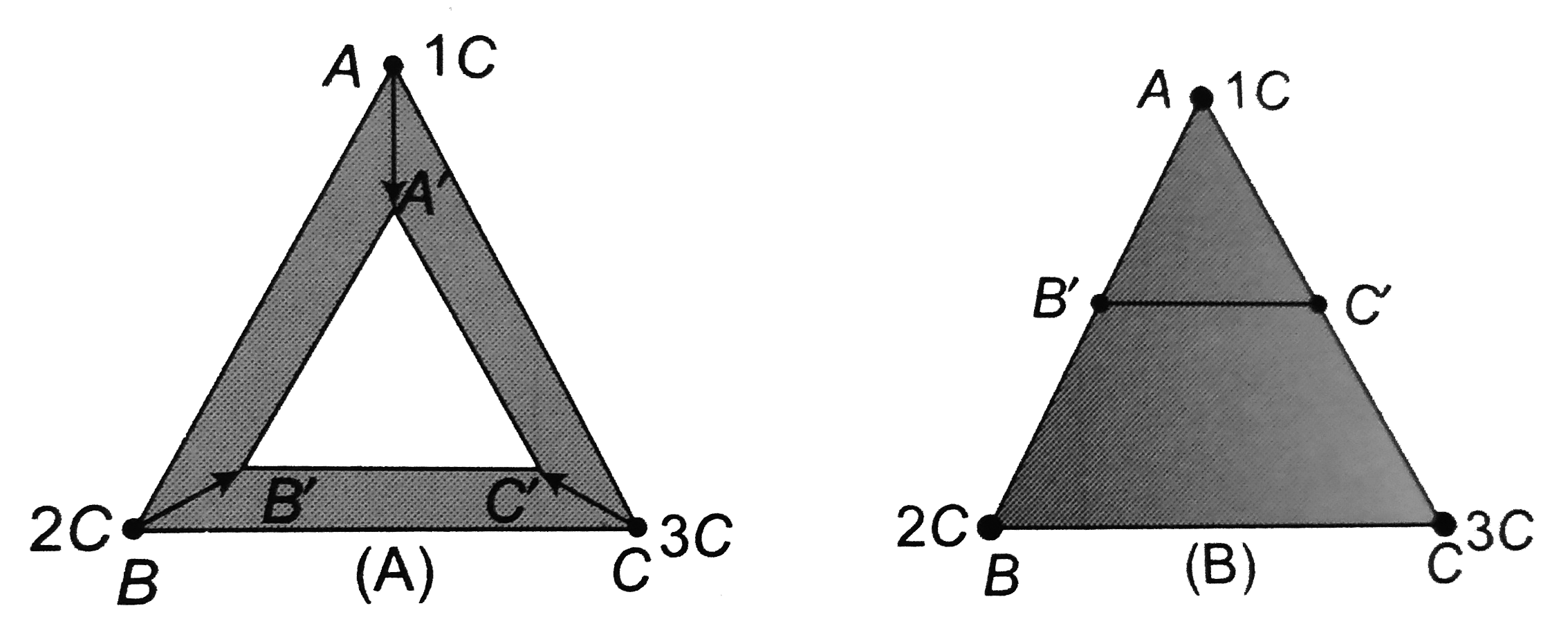 02:24View Solution
02:24View SolutionAs per this diagram a point charge `+q` is placed at the origin `O`. Work done in taking another point charge `-Q` from the point `A(0, a)` to another point `B(a, 0)` along the staight path `AB` is:
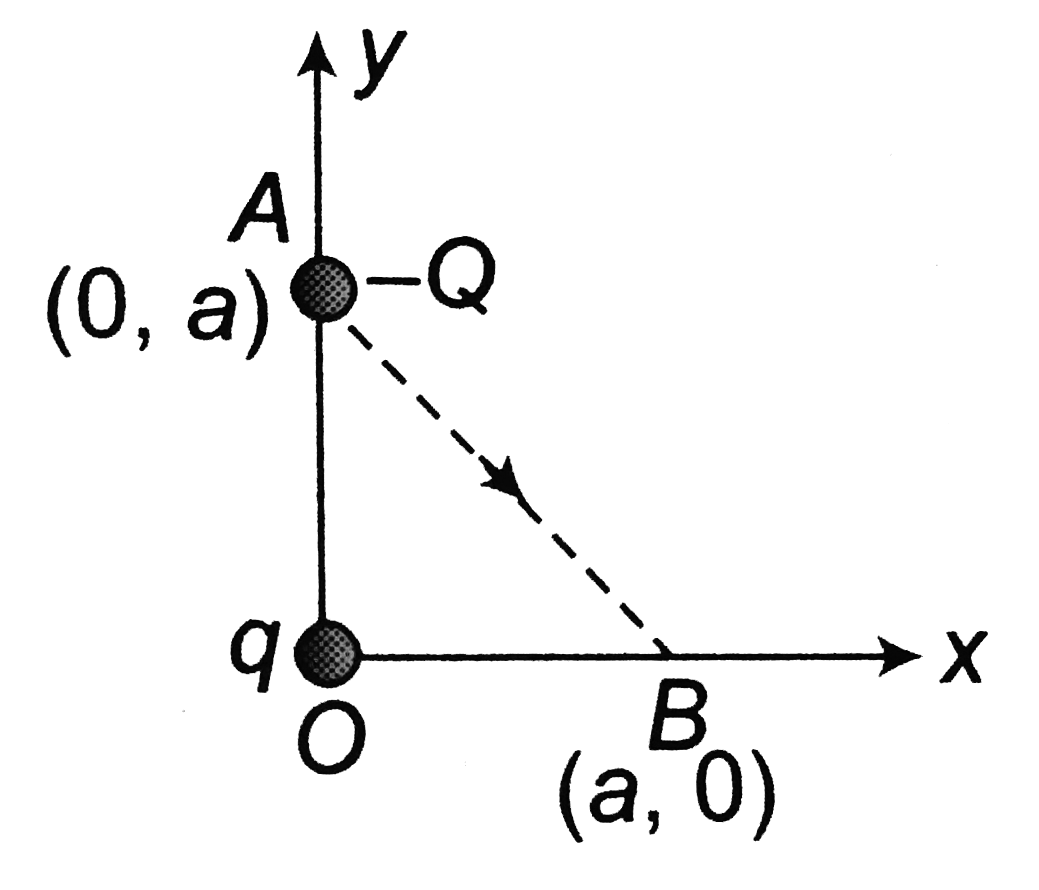 01:42View Solution
01:42View SolutionA particle `A` has chrage `+q` and a particle `B` has charge `+4q` with each of them having the same mass `m`. When allowed to fall from rest through the same electric potential difference, the ratio of their speed `(v_(A))/(v_(B))` will become
02:09View SolutionCharge Q is given a displacement `r=ahati+bhatj` in electric field `E=E_1hati+E_2hatj`. The work done is
01:46View SolutionA particle `A` of mass `m` and charge `Q` moves directly towards a fixed particle `B`, which has charge `Q`. The speed of `A` is a `v` when it is far away from `B`. The minimum separtion between the particles is not proportional to
03:13View SolutionThe electirc field strength at a distance `r` from the centre of a charged sphere of radius `r` is `E`. If `r gt R`, how much work will be done in bringing a test charge `q_(0)` from infinity to that point, is
02:59View SolutionA point charge `q` is located at the centre `O` of a spherical uncharged coducting layer provided with small orifice. The inside and outside radii of the layer are equal to a and `b` respectively. The amount of work that has to be performed to slowly transfer the charge `q` from teh point `O` through the orifice and into infinity is
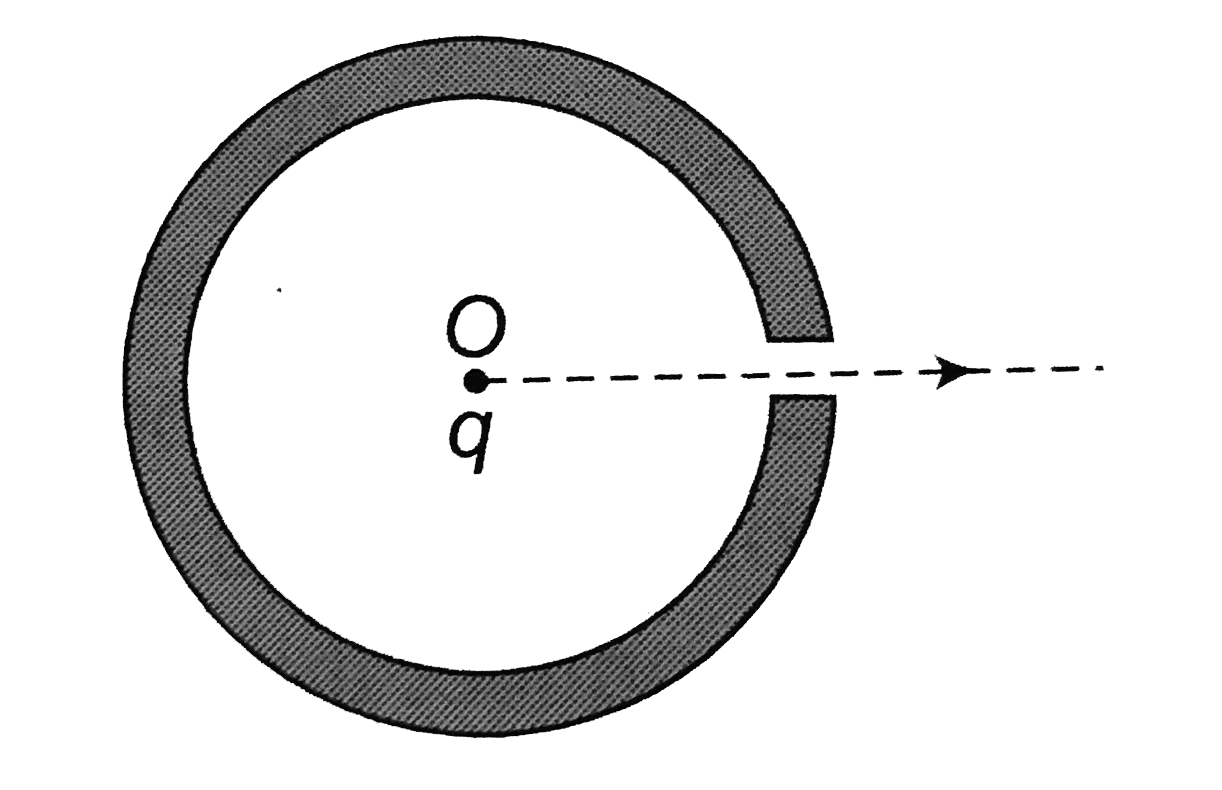 03:55View Solution
03:55View SolutionThree equal charges `Q` are placed at the three vertices of an equilateral triangle. What should be the va,ue of a charge, that when placed at the centroid, reduces the interaction energy of the system to zero ?
03:42View SolutionAn electric dipole of dipole moment `vecp` is oriented parallel to a unifrom electric field `vecE`, as shown

It is rotated to one of four orientations shown below. Rank the final orientations according to the change in the potential energy of the dipole-field system, most negative to most positive.
 02:49View Solution
02:49View SolutionTwo capacitors `3muF` and `4muF` have same maximum voltage rating `V_(0)`. When they are connected in series, they can withstand a maximum potential difference of `700 V`. What is `V_(0)` ?
03:26View SolutionIn the circuit shown in figure charge stored in the capacitor of capacity `5muF` is
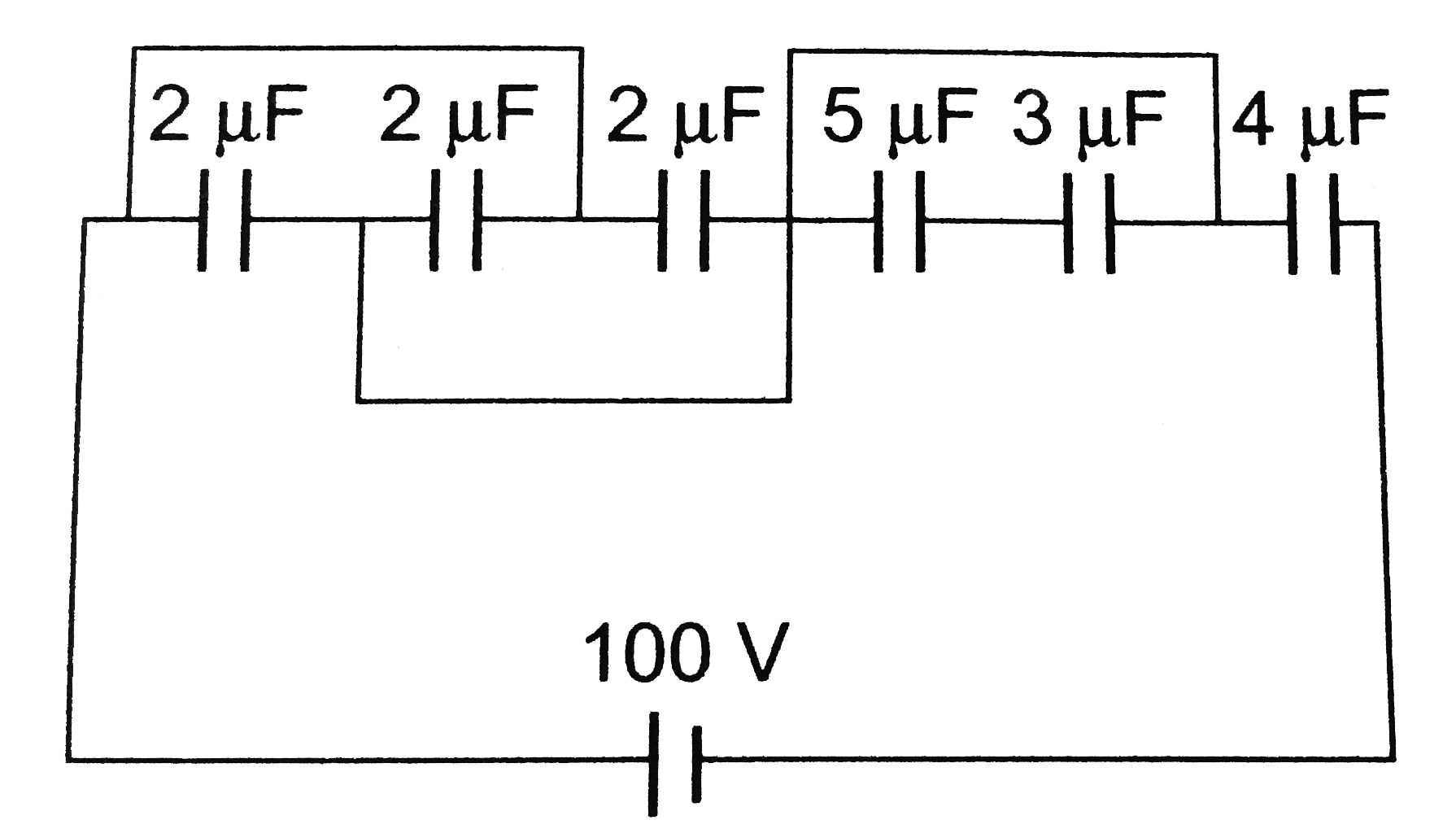 02:42View Solution
02:42View SolutionIt is possible to obtain a large potential difference by charging a number of capacitors in parallel and then disconnecting them to connect them again in series. What maximum potetnial difference can be obtained using `10` capacitors each of `5 muF` and a charging source of `400 V` ?
03:07View SolutionThree long conducting plates `A, B` and `C` having charges `+q, -2q`, and `+q` as shown in figure. Here plate `A` and `C` are fixed. If the switch `S` is closed. The middle plate `(B)` will start moving in
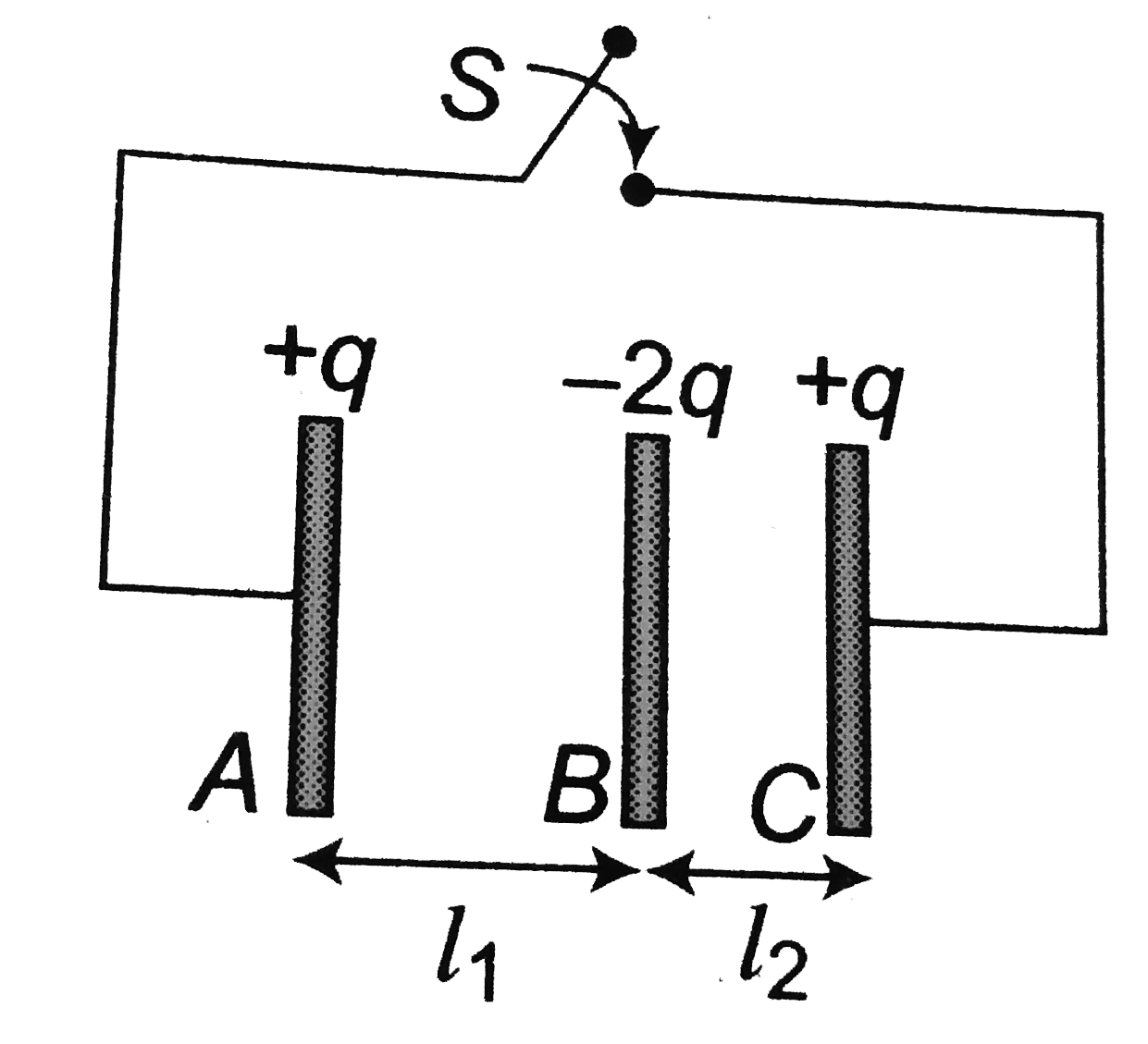 03:22View Solution
03:22View SolutionTwo charged particles having charge `1 muC` and `-muC` and of mass `50 gm` each are held ar rest while their separtion is `2m`. Find the relative velocity of the particles when their separation is `0.5m`.
05:34View SolutionThe charge flowing through the cell on cloing the key `k` is equal to :
 03:00View Solution
03:00View SolutionFive identical plates are connected across a battery as follows : If the charge on plate `1` be `+q`, then the charges on the plates `2, 3, 4` and `5` are
 05:31View Solution
05:31View Solution
Problems Based On Mixed Concepts questions and complete solutions for chapter ELECTRIC POTENTIAL & CAPACITANCE of A2Z PHYSICS (HINGLISH) of Class 12
All Exercises from A2Z Class 12 PHYSICS ELECTRIC POTENTIAL & CAPACITANCE
- AIIMS Questions
- AIPMTNEET Questions
- Assertion Reason
- Capacitor
- Capacitor Circuits
- Capacitor With Dielectric
- Electric Potential
- Electric Potential Energy
- Euipotentials
- Grouping Of Capacitors
- Problems Based On Mixed Concepts
- Relation Between Electric Field And Potential
- Section B - Assertion Reasoning
- Section D - Chapter End Test
